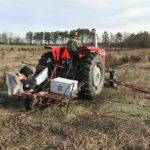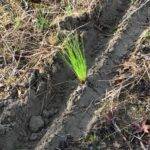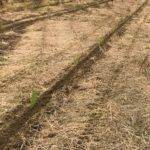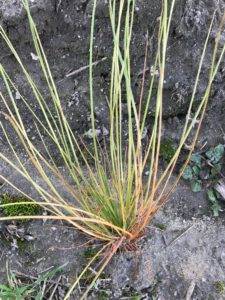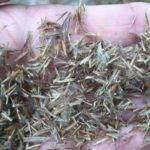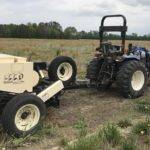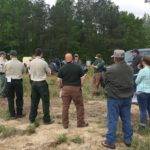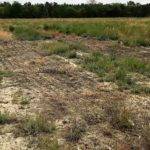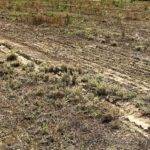“A society grows great when old men plant trees whose shade they know they shall never sit in.” – Greek Proverb
“The best time to plant a tree was twenty years ago. The second best time is now.” – Chinese Proverb
There may be some debate about the veracity of these quotes, however the sentiment rings true. As Jeanette and I have embarked on our “tree farming” and land management adventure, the reality soon hit us that being in our 60’s, we better enjoy the planting and nurturing processes as it is unlikely we will enjoy the shade of these trees. Perhaps if any of our children or grandchildren embrace our love of land management and want to continue, they will be able to enjoy the fruits of what we have done. Well, enough philosophising and on to the planting!
The tree planting process was interesting. We arranged for a professional to machine plant the trees. The containerized improved Longleaf pine (LLP) seedlings were ready for pick-up from the NC Forestry Tree Seedling Store. 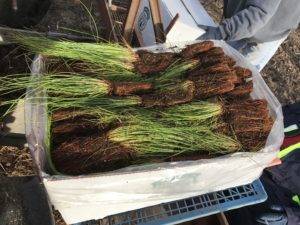 Our management plan called for tree plantings 8 feet apart in 12 foot rows. This would allow adequate space for a tractor and seed drill to plant native grasses and forbs between the rows of trees. For our 20.8 acres, this amounted to more than 9000 seedlings.
Our management plan called for tree plantings 8 feet apart in 12 foot rows. This would allow adequate space for a tractor and seed drill to plant native grasses and forbs between the rows of trees. For our 20.8 acres, this amounted to more than 9000 seedlings.
The process involved two men, one to drive the tractor and make sure the lines were straight, and one that sat in a low seat on the planter. 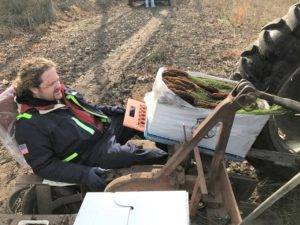 The planter created a furrow and the second man placed a seedling into the furrow later closed by the following wheels. It is critical not to plant the seedlings too deeply. A large wheel with a circumference of 8 feet had a nail in it that would strike a bell with each rotation. A tree would be planted with each toll of the bell.
The planter created a furrow and the second man placed a seedling into the furrow later closed by the following wheels. It is critical not to plant the seedlings too deeply. A large wheel with a circumference of 8 feet had a nail in it that would strike a bell with each rotation. A tree would be planted with each toll of the bell.
The planting process took most of an entire day and was completed in mid December 2016.
- Machine Planting
- Longleaf Seedling
- Row of seedlings
With baby pine trees, most of the activity over the following months, is occurring underground as roots are growing. Many of the above ground needles turned brown but glimpses of green gave us encouragement. The next step in the establishment of our LLP plantation was another round of herbicide spraying in early Spring 2017 to release the trees from weed competition.
This spraying was a bit complicated because of our plan to plant native warm season grasses and forbs (NWSG/Forbs) in between the rows of trees. The herbicides that were safe for use on the LLP would prevent the seeds from germinating, and the herbicides that would prepare the rows for seed drilling would kill the pine trees! Once again, we sought out a professional who was able to do a 2 ft wide band spraying over the rows of trees with one recipe, and a wider band spraying between the rows for the other recipe.
Now for the drilling of the seeds. Remember, our goal with this phase of project was to establish a healthy, native understory vegetation for our Longleaf pines. This ultimately will replace the unhealthy weed population selected by years of crop field management. The native vegetation is good for wildlife especially birds and will help carry a fire through which is good for the LLP.
The seeds for native grasses are very fluffy and can’t be planted using a regular seed drill which is more designed for hard seeds. We were able to rent Truax seed drill from the NRCS office in a neighboring county. This drill is specially designed for planting these kind of seeds. Since our CRP contract and management plan was a bit unusual in that most people don’t add the understory seed planting as we were, the NC Wildlife biologist invited other habitat professionals for a site visit on the day of planting which was the end of April 2017.
- NWSG Seeds
- Truax Seed Drill
- Site Visit
John Isenhour stayed with me most of the day and helped with calibrating the drill to assure correct seed density. After a long day, the field didn’t look like much, but we were optimistic.
Next: Longleaf Pines: Watching and Waiting.

